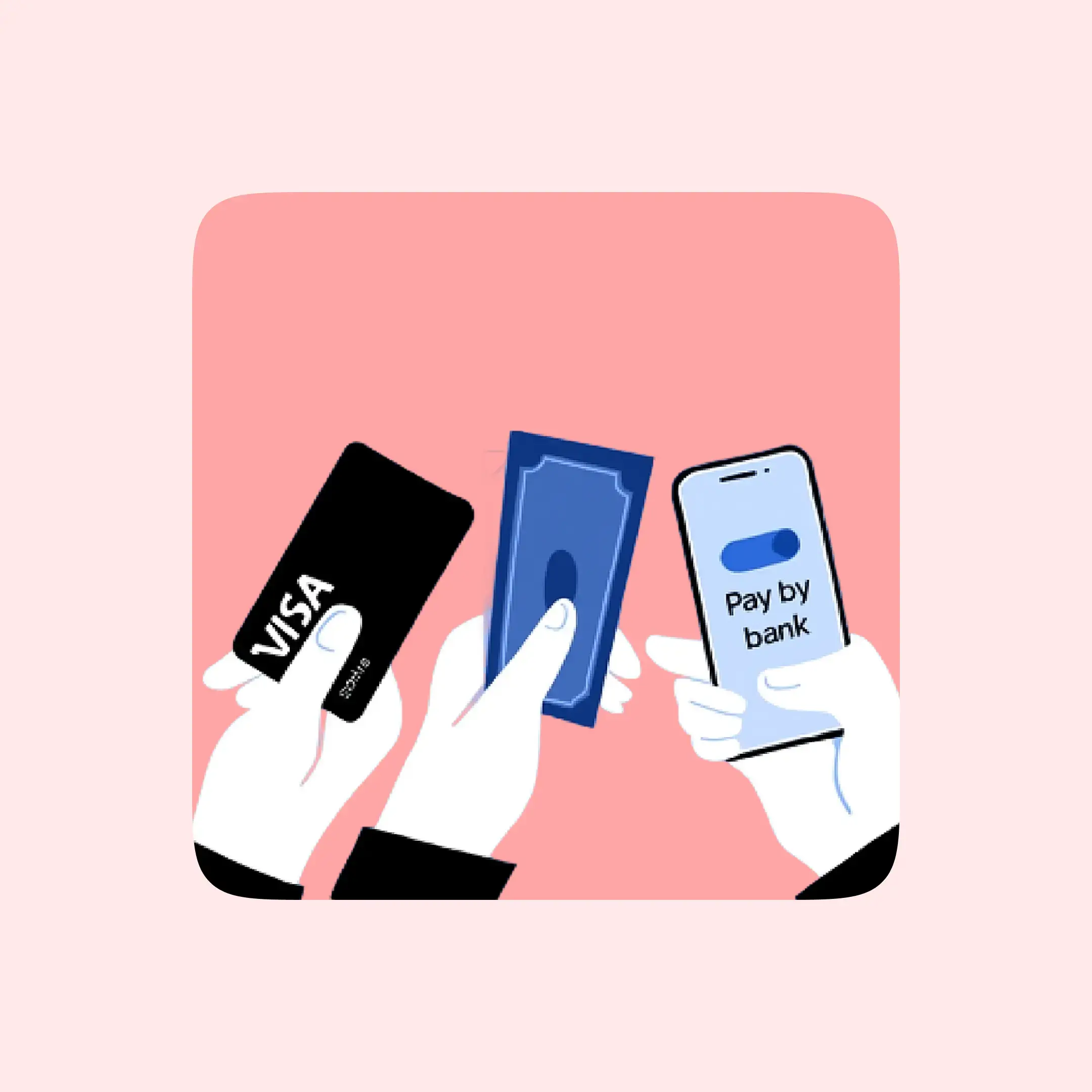Ready to get started?
Get paid faster and save up to 50% on fees with Pay by Bank.
When customers click the “Pay now” button, what happens behind the scenes isn’t always simple. Every payment type, whether a card, a digital wallet, or Pay by Bank, carries its own invisible costs. These costs, collectively known as the Total Cost of Acceptance (ToCA), can quietly eat into a business’s profit margins.
In this article, we’ll break down what ToCA really means, how it differs across popular payment methods, and why understanding it is crucial for any UK business looking to optimise their checkout.
What is the Total Cost of Acceptance?
The Total Cost of Acceptance includes all the fees and operational costs tied to processing a payment, not just the headline transaction rate. It typically covers:
- Processing fees: What you pay your acquirer, PSP, or network per transaction.
- Hardware or software costs: POS terminals, payment integrations, or plugin subscriptions.
- Settlement delays: The opportunity cost of waiting days for your funds to clear.
- Chargebacks and disputes: The admin, risk, and lost time associated with reversals.
- Customer experience factors: Payment friction or failed transactions that reduce conversion.
Cards: Reliable but expensive
Card payments are convenient and widely accepted, but they remain the most expensive option for many UK businesses.
- Fees: Interchange, scheme, and acquirer fees stack up quickly.
- Settlement: Usually 1–3 business days.
- Chargebacks: Common, with disputes adding admin overhead.
- Experience: Customers are familiar, but typing card details can cause checkout drop-offs.
While cards remain a must-have for global commerce, their ToCA can reach 2–3% or more per transaction, once all factors are included.
Pay by Bank: The low-cost, instant alternative
Pay by Bank has changed the equation for UK businesses. Payments move directly between bank accounts, cutting out card networks entirely.
- Fees: Typically a fraction of card fees.
- Settlement: Almost instant, improving cash flow.
- Chargebacks: None. Funds settle securely and irrevocably.
- Experience: Customers approve payments through their own banking app with fingerprint or face ID.
For UK businesses, this means lower costs, fewer disputes, and faster access to funds.
Digital wallets: Convenient but not cheap
Digital wallets like Apple Pay, Google Pay, and PayPal blend speed with convenience. They’re easy for consumers, but for merchants, they still ride on card rails, and that means card-like fees.
- Fees: Medium-to-high, typically similar to card rates.
- Settlement: Fast from a customer’s view, but settlement still follows card timelines.
- Chargebacks: Possible, since these depend on card issuers.
- Experience: Excellent for frictionless, mobile-first checkouts.
Wallets shine for user experience, but they don’t necessarily save merchants money.
Why the shift matters
The UK’s payment mix is changing fast. Businesses are realising that cost efficiency and customer experience can go hand in hand. By 2026, two-thirds of e-commerce transactions in the UK and Europe are expected to use alternative payment methods such as bank transfers, wallets, and BNPL, signalling a decisive move away from cards and towards flexible payments.
Takeaway
Every payment choice carries a hidden story: how much it costs, how fast it settles, and how simple it is to manage. For many UK businesses, those stories are starting to change. Card fees keep rising, wallets are convenient but costly, and Pay by Bank has quietly become the efficient middle ground: quick, transparent, and built for a world that moves in real time. As more customers get comfortable paying straight from their bank, it’s not just another payment option, it’s the start of a smarter way to get paid.



